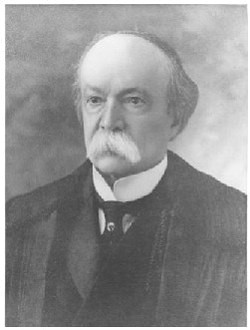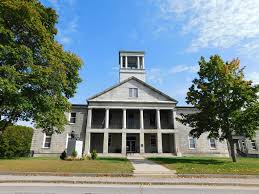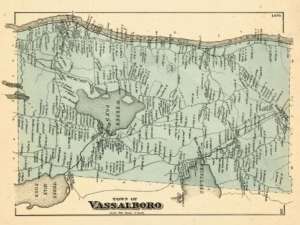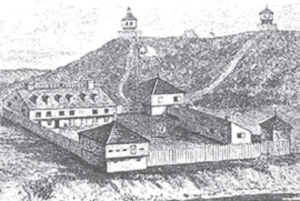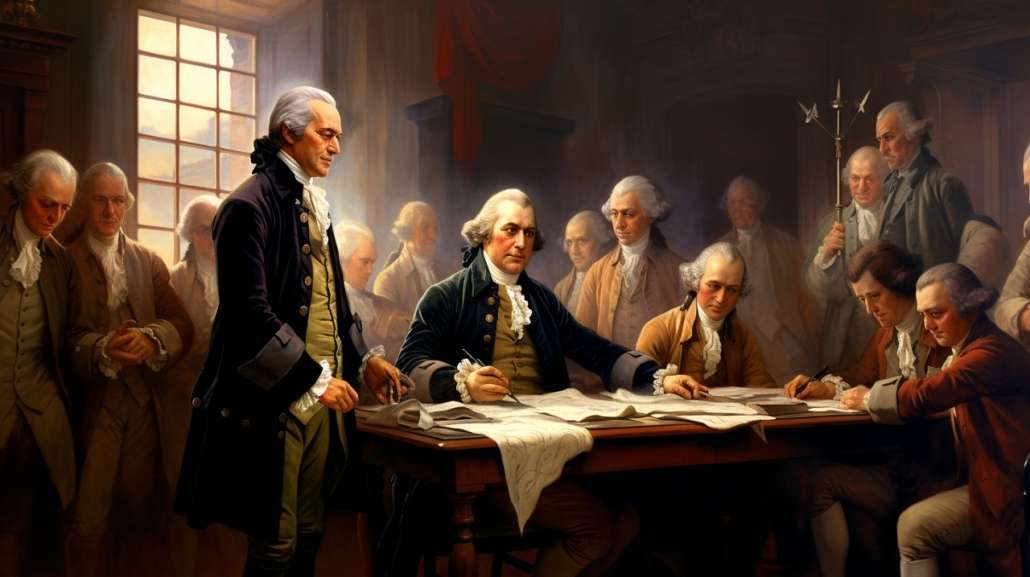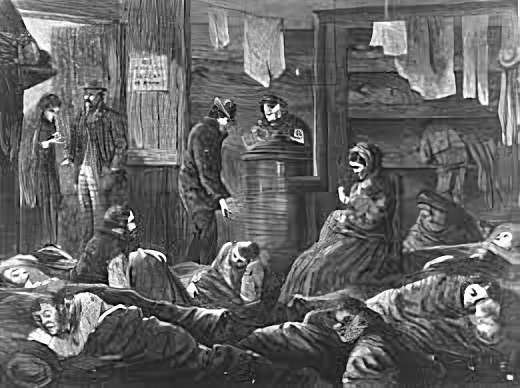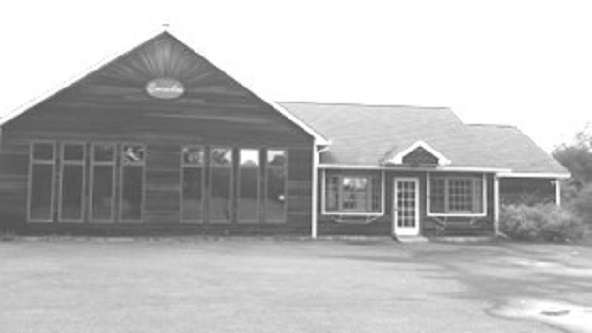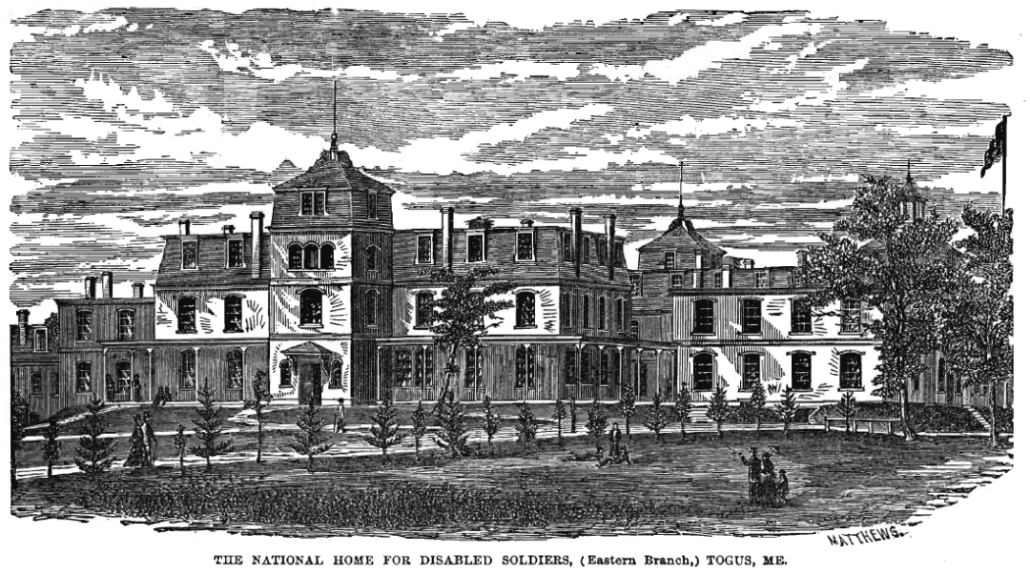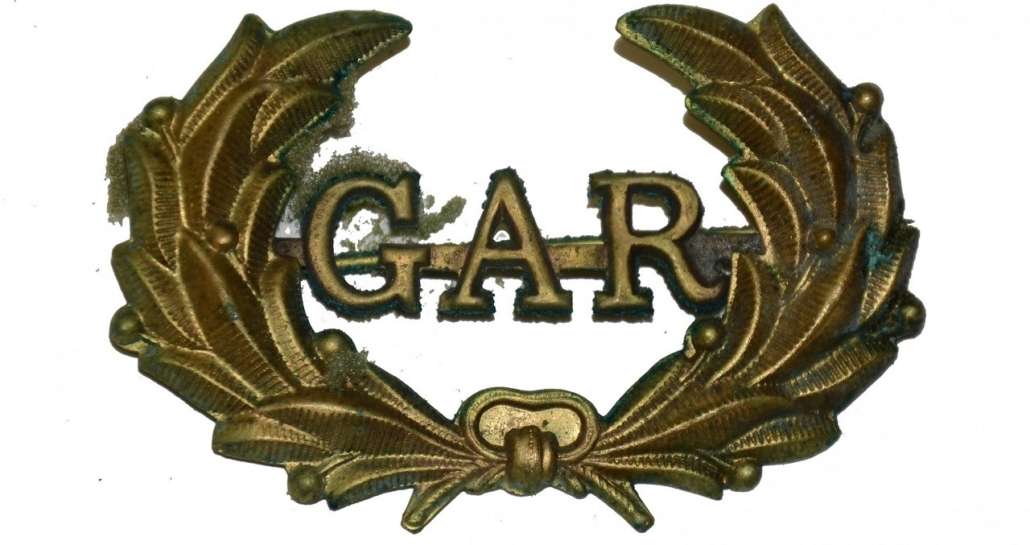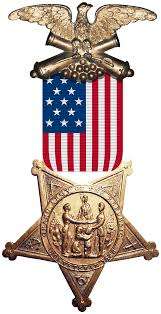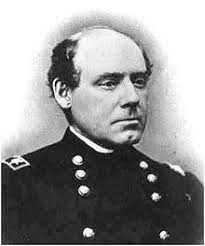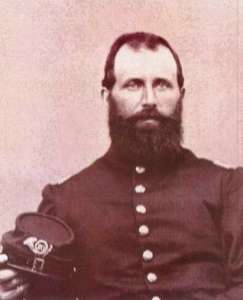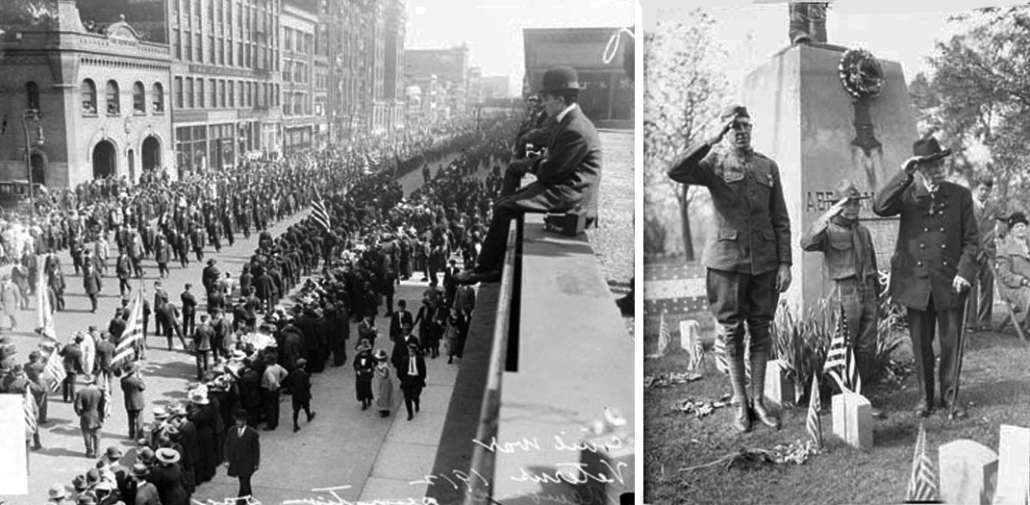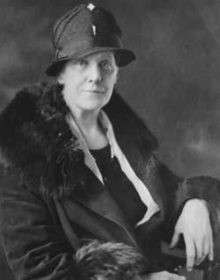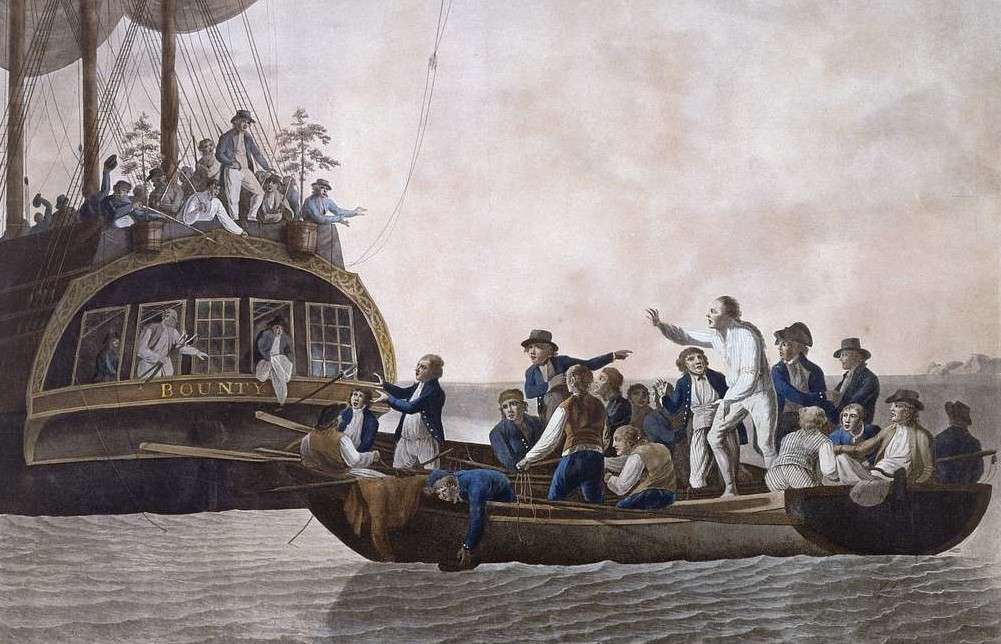Up and Down the Kennebec Valley: Lower courts & Augusta Courthouse
by Mary Grow
Last week’s article summarized part of the origin of Maine’s court system, including the 1820 creation of the state Supreme Court. The next level below the Supreme Court, according to William Penn Whitehouse’s information in Henry Kingsbury’s 1892 Kennebec County history, was the court of common pleas.
As related last week, courts of common pleas were abolished in 1872. In 1878, some of this court’s functions were taken over in Kennebec County by the county superior court.
Whitehouse summarized the types of cases the superior court was authorized to decide. Through successive legislative acts, he wrote, the court’s jurisdiction came to include “all civil matters, except real actions, complaints for flowage, and proceedings in equity, including libels for divorce….”
Here is a definition of “real action” from the web: “a local legal action founded on seisin [another word for possession] or possession in which title is placed in issue and which aims at establishing title to a particular piece or part of real estate and at recovering the piece or part of real estate.”
“Flowage” is defined as “an overflowing onto adjacent land,” or “a body of water formed by overflowing or damming.”
“Proceeding in equity” means “a civil suit that seeks an equitable remedy, such as an injunction or specific performance, rather than a legal remedy, such as monetary damages.”
The superior court, Whitehouse wrote, also had “exclusive original and appellate jurisdiction of all criminal matters, including capital cases.” It was authorized to hear appeals from “municipal and police courts and trial justices in civil and criminal cases.”
An 1891 law, he said, limited the superior court’s jurisdiction to cases where requested damages were under $500. It also provided that in a murder trial, “one of the judges of the supreme court must preside.”
The next level of courts Whitehouse described he called the court of sessions. Inherited from Massachusetts, this court consisted of justices of the peace, at first however many there were in a jurisdiction, after 1807 a fixed number.
In Kennebec County (which had been separated from Lincoln County in February 1799), Whitehouse said this court had six justices plus a chief justice until 1819, when it was reduced to two justices plus a chief justice.
In 1831, the court of sessions was replaced by a court of county commissioners. This court still existed in 1892; it consisted of “three persons elected by the people.”
(Whether Whitehouse meant these “persons” were commissioners is unclear. However, the current Kennebec County website suggests they might have been. This site says the three Kennebec County commissioners, each representing a district in the county, have responsibility for policies and budgets; and “Additional duties include municipal tax abatement appeals and hearings on maintenance of town roads.”)
Yet another type of court Whitehouse said Maine inherited from Massachusetts is the probate court. A Maine Probate Court website explains: “Probate Courts handle the estates of deceased and missing persons, guardianship of incapacitated adults and minor children, trusts, legal name changes of adults and minors, adoption matters as well as other family matters.”
In 1784, Whitehouse wrote, the Massachusetts legislature created county probate courts, each consisting of one “able and learned person” as judge. The Maine legislature, in 1821, continued the system; in 1853, county probate judges and registers of probate (the person who manages and administers the court) were made elective officials, serving four-year terms.
Elizabeth “Libby” Mitchell, of Vassalboro, has been Kennebec County probate judge since 2016; she was re-elected in November 2024. Her husband, James “Jim” Mitchell, had held the position for 37 years before his death in September 2016.
The register is Ronda Snyder, of Sidney, serving her first term.
* * * * * *
In addition to state and county courts, Whitehouse listed municipal courts. In Kennebec County, they were established in Hallowell in 1835; in Gardiner in 1849 or 1850; in Augusta in 1850; and in Waterville in 1880 (called the police court).
Judges were elected until 1876. Thereafter, Whitehouse said, they were appointed by the governor and council for four-year terms.
These courts generally took over the powers that had been held by justices of the peace. In 1891, Whitehouse wrote, the legislature expanded the Waterville court’s jurisdiction over both criminal matters and minor civil actions. He did not explain why.
* * * * * *
According to James North in his 1870 history of Augusta, when Augusta and Hallowell separated in February 1797, the courts remained in what became briefly Harrington and on June 9 Augusta.
The first courthouse had been built in Market Square near Dickman Lane (now Dickman Street, in downtown Augusta?) in 1790. Money was raised by subscription, North said, with Henry Sewall (1752 – 1845, one of numerous Sewalls important in Augusta history) subscribing $10 in “labor and materials.” He and his brother, Jonathan Sewall, did most of the work.
By December 1790 the project was out of money, and the building wasn’t finished. The subscribers decided to make one room fit for the Court of Common Pleas’ January 1791 session. North wrote that the room was adequate, though it was “neither plastered nor lathed” until December 1791.
In June 1801, North wrote, Kennebec County officials decided it was time for a new courthouse. They chose a site on State Street (then named Court Street; what is now Court Street did not exist until 1803, and then only its east end, between Water and State streets) “on the site of the present [1870] new jail.”
This courthouse was usable by the winter of 1801-1802 – North wrote that religious services were occasionally held in it. It was officially finished March 16, 1802, and the Court of Common Pleas moved in.
“It was a commodious building for that day, and served the county for nearly thirty years,” North wrote. After that it became the State Street Chapel, home of the Second Baptist Church; then the Concert Hall; and when the new jail claimed the lot under it, it was moved and in 1870 was still the Concert Hall.
When the Kennebec County Court of Sessions met for its December 1827 term, some Kennebec Bar members asked for a new courthouse. The judges decided there was indeed a need for “better accommodation of the county and public offices” and appointed a six-man committee to design a new building and provide a cost estimate.
The committee reported in February 1828, proposing a 50-by-60-foot granite building 30 feet high. The court agreed and appointed James Cochran architect and Robert C. Vose builder. In January, 1829, they paid $1,000 for a lot (now 95 State Street).
General Joseph Chandler laid the cornerstone for the courthouse on May 29, 1829. North does not further identify him nor say why he was chosen; he does say there was a “brief ceremony, in presence of the workmen and a few spectators.”
Under the cornerstone, he said, were placed an engraved plate with the date; the governor’s name (Enoch Lincoln, who became governor on Jan. 3, 1827, and died in office Oct. 8, 1829, in Augusta, three days after a public speech at Cony Female Academy); lists of judges of the Supreme Court and the Court of Sessions; and the name of “Mr. Berry, the master builder.” Two “recent newspapers” were added.
North wrote that the outside of the building was finished in August, the inside in December. The Supreme Court was the first to use it, opening a session on June 1, 1830.
Maine’s first chief justice, Prentiss Mellen from Portland, who served from July 1, 1820, until he retired on Oct. 11, 1834 (the year he turned 70), praised the new courthouse as the best in the state. The state Supreme Court continued to hold its Augusta sessions in the building until 1970.
The courthouse is an early example of Greek Revival style in Maine, with Doric columns across the front on both levels. It now has a wooden belfry on top; but North wrote that originally the courthouse bell was hung in a small separate tower “in the rear of the county offices at the southwest corner of the lot.”
This configuration, he wrote, gave rise to jokes about “a church having sunk, leaving its steeple above ground.”
The belfry was moved to its proper location “within a few years,” Maine historian Earle G. Shettleworth Jr., surmised when he prepared the application for National Register listing in December, 1973.
The original courthouse has been enlarged twice, Shettleworth wrote. In 1851, it was expanded to the rear; in 1907, a new probate wing was added. Both additions were made “with granite in sympathy with style, scale, and texture of the original structure.” The inside has been repeatedly renovated.
* * * * * *
Your writer failed to find information on any early courthouse in Waterville.
Looking up “courthouse history Waterville Maine” on line brought an AI response (your writer regards AI with caution and doubt) saying Waterville’s courthouse is the 1829 Kennebec County courthouse, in Augusta.
Other on-line sources consider the contemporary Waterville courthouse the modern brick building on Colby Street, north of the business district. It houses the district court.
The Maine Judicial Branch website offers this information on contemporary district courts:
“As of July 1, 2024 the District Court has 44 judges and a number of Active Retired Judges who hold court in eight regions at many locations throughout Maine. The District Court hears civil, criminal and family matters and always sits without a jury.”
Augusta’s District Court is housed in a modern building at 1 Court Street. Another website says the Kennebec County Superior Court also holds sessions there.
Main sources
Kingsbury, Henry D., ed., Illustrated History of Kennebec County Maine 1625-1892 (1892).
North, James W., The History of Augusta (1870).
Websites, miscellaneous.


